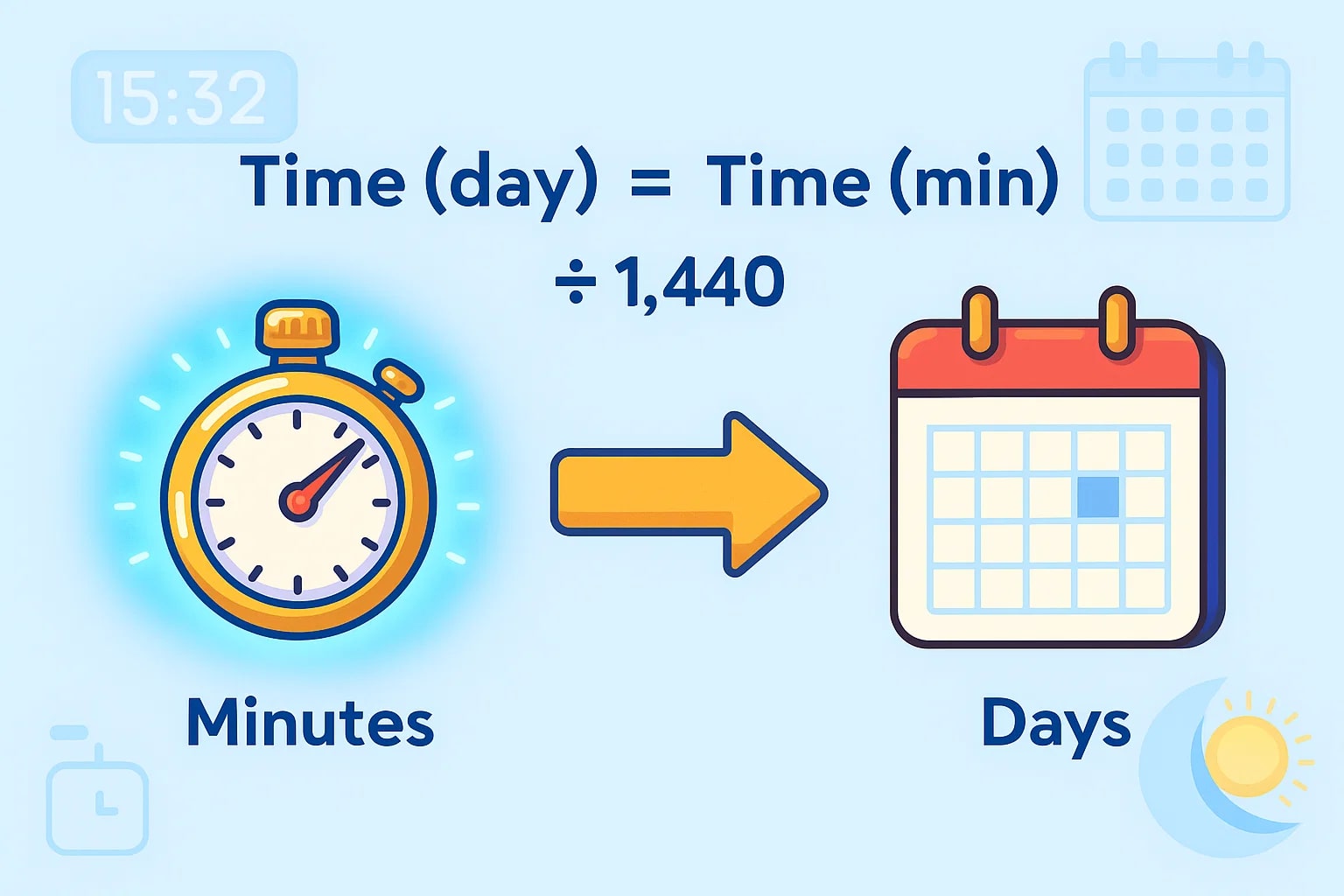minute to day – How to convert min to day
If you've ever tried to break down long time durations or schedule recurring tasks, you’ve probably needed to convert minutes to days. While minutes are great for measuring short intervals — a quick meeting, a coffee break — days are better for project planning, tracking downtime, or understanding larger patterns in time. The conversion between the two is simple, but it’s surprising how often it comes in handy.
Let’s explore how it works and where it becomes practical.
What is a minute?
A minute is a unit of time equal to 60 seconds. It’s one of the most widely used time measurements, small enough to capture short activities and flexible enough to divide hours cleanly.
From setting timers to measuring exercise, meetings, or travel delays, minutes appear in just about every context of daily life. In digital systems, minutes are used to log events, check updates, and track user activity in applications.
What is a day?
A day equals 24 hours, or 1,440 minutes. It reflects the Earth’s full rotation relative to the Sun and forms the basis of calendars and daily routines.
While hours and minutes are convenient for short intervals, days are a more natural unit for understanding work schedules, medication timing, time off, or long-term trends in systems and analytics.
How to convert minute to day
To go from minutes to days, simply divide the total number of minutes by the number of minutes in a day:
1 hour = 60 minutes1 day = 24 hours1 day = 24 × 60 = 1,440 minutes
Formula:days = minutes ÷ 1,440
Try this example
Let’s say you want to convert 2,880 minutes into days.
days = 2,880 ÷ 1,440days = 2
So, 2,880 minutes is exactly 2 days.
Need faster results? Use the Time Converter to make quick work of any time unit. You can also check other conversions from our full Conversion tools directory.

Did you know?
-
The ancient Babylonians divided hours and minutes into 60 parts, which is why we still use 60 seconds per minute and 60 minutes per hour today.
-
A leap day, added every four years, corrects the calendar by exactly 1,440 minutes — one full day.
-
In aviation, flight times and fuel calculations often convert minutes to fractional days for long-haul planning.
-
Many medication regimens calculate dosages based on days but use minutes when tracking effectiveness during clinical trials.
-
Space missions log time in minutes during critical phases like launch, then switch to days once stable orbit is reached.
From countdowns to calendars
In April 1970, during the Apollo 13 mission, engineers had just 87 minutes to plan a new flight path after an oxygen tank exploded. While the crisis played out over several days, each minute counted — the crew’s safety depended on precision. Converting between small units like minutes and larger spans like days became essential for managing fuel, oxygen, and system restarts during the rescue plan.
In more grounded examples, think about server uptime. A site might report 10,080 minutes of uptime. That’s exactly 7 days, but without converting it, the raw number doesn’t mean much. The same goes for tracking sleep across a week, or calculating screen time across several days. In all these cases, the ability to fluidly convert between minutes and days gives better perspective and usability.

More than just numbers on a clock
When you need to go from minutes to days, the formula is straightforward:
days = minutes ÷ 1,440
But behind that simplicity is a powerful way to measure time at both micro and macro levels. Whether you’re designing schedules, analyzing performance, or planning long-term events, having control over how time is measured makes a big difference.
Use the Time Converter for fast, accurate results — and don’t forget to explore other time units in our Conversion tools collection.

